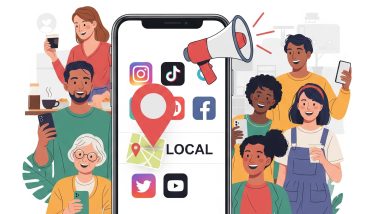In today's fast-paced world, achieving financial freedom has become a goal. For many people, an important step in this direction is becoming debt-free. Managing and eliminating debt provides a sense of security and opens up opportunities for future financial success.
In this blog, we've chosen real-life examples to illustrate these principles and practical strategies to help you become debt-free.
How to Get Debt-Free?
- Assess Your Financial Situation:
Before formulating a plan, it's essential to assess your current financial situation. List all your debts, their interest rates, and monthly payments. Understanding the full scope of your financial landscape is the first step toward effective debt management.
- Create a detailed budget:
First, develop a comprehensive budget that outlines your monthly income and expenses. Identify areas where you can reduce or reallocate money to pay off debt. A well-crafted budget serves as the foundation of your journey to financial freedom.
Example: Let's consider Meena Ben, a young professional with student loan debt and credit card balances. By creating a detailed budget, she identified areas where she could cut discretionary spending and allocate more money for debt repayment. - Prioritize High-Interest Debt:
Focus on tackling high-interest debts first. These debts accumulate interest quickly and can become significant financial burdens over time. By prioritizing them, you minimize the overall cost of your debt.
Example: Rakesh has multiple debts, including a high-interest credit card and a car loan. Focusing on paying off the credit card first, he reduced the overall interest he owed, allowing him to tackle other debts more efficiently.
- Emergency Fund for Financial Cushion:
Establishing an emergency fund is crucial to prevent future reliance on credit during unexpected expenses. Aim to save three to six months' worth of living expenses to create a financial safety net.
Example: Emily faced unexpected medical expenses that pushed her deeper into debt. Establishing an emergency fund would have provided a financial cushion, preventing her from relying on credit cards and accumulating additional debt. - Consolidate and Refinance Loans:
Explore debt consolidation or refinancing options, especially if you have multiple loans with varying interest rates. Consolidating your debts into a single, lower-interest payment can simplify your financial obligations and reduce overall interest costs.
Example: Mike had various high-interest loans. By consolidating and refinancing his loans into a single, lower-interest loan, he reduced monthly payments and saved on interest over time. - Negotiate with Creditors:
Don't hesitate to reach out to your creditors if you're facing financial hardship. Many creditors are willing to negotiate lower interest rates or flexible repayment plans to help you manage your debts more effectively.
Example: Sarah, facing financial hardship, reached out to her creditors to negotiate lower interest rates and more manageable repayment plans. Many creditors are willing to work with individuals facing difficulties to help them get back on track. - Utilize Debt Repayment Strategies (Snowball or Avalanche Method):
Consider employing popular debt repayment strategies like the snowball or avalanche method. The snowball method involves paying off the smallest debts first, gaining momentum, while the avalanche method targets high-interest debts, minimizing overall interest payments.
Example: Avnish utilized the snowball method, focusing on paying off his smallest debts first and then applying those payments to larger debts. Alternatively, the avalanche method involves tackling high-interest debts first. Both approaches can be effective, depending on individual preferences. - Increase Income Streams:
Explore opportunities to increase your income, whether through a side hustle, freelancing, or seeking additional qualifications to boost your career. Supplementing your income can provide extra funds to accelerate debt repayment.
Example: Lisa, a side hustle enthusiast, used additional income from freelancing to accelerate her debt repayment. Exploring new income streams can provide extra funds to pay off debts faster. - Financial Counseling and Education:
Consult with a financial advisor or counselor to receive personalized advice and guidance tailored to your specific situation. Professional expertise can provide valuable insights and strategies to fast-track your journey to debt freedom.
Example: John sought guidance from a financial counselor who helped him create a personalized debt repayment plan. Gaining financial education and professional advice can be invaluable in navigating the path to becoming debt-free.
Becoming debt-free is a significant achievement that requires dedication, strategic planning, and financial discipline. By following these actionable steps and adopting a proactive mindset, you can regain control of your financial future. Remember, each step toward debt freedom brings you closer to a more secure and prosperous financial life. Read also: Karz Kaise Utare.


















